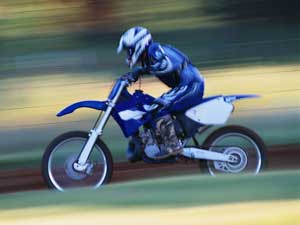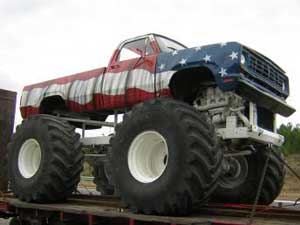 Sections covering off-highway vehicles can be found in the California Vehicle Code, Sections 38000 through 38397.
Sections covering off-highway vehicles can be found in the California Vehicle Code, Sections 38000 through 38397.
Registration
- All motor vehicles used exclusively off-highway must display special identification issued by the Department of Motor Vehicles.
- Off-highway vehicles may be driven on the highway if equipped and registered as required by law for highway use.
Equipment
All off-highway vehicles must be equipped as specified in Sections 38325 through 38397 of the California Vehicle Code, which includes:
- Lights — When operated at night, a vehicle at minimum must have a lighted white headlamp, of an approved type, which reveals objects 200 feet distant. The law permits off-highway vehicles to be equipped with four off-highway headlamps (in addition to headlamps legally permitted for highway use) and two auxiliary lamps - fog, passing or driving - all of approved types. If the vehicle is registered for street use, the four off-highway lamps must be covered and disconnected when the vehicle is on the highway.
- Brakes — A motor vehicle must be equipped with service brakes adequate to control and stop the vehicle (or combination) under any conditions of loading or grade. (Air-cushioned and other vehicles, which cannot comply, must be subject to safe control by the operator.)
- Mufflers — Vehicles must be equipped with an adequate muffler. No muffler or exhaust system may include a cutout, bypass, or similar device. Vehicles raced in organized competition are exempt.
- Pollution Control Devices — Off-highway vehicles of the 1978 and late model years must be equipped with required pollution control devices, correctly installed and operational. Disconnecting, modifying or altering the device or system is prohibited, unless the State Air Resources Board has approved the modification.
- Spark Arresters — Off-highway motorcycles must be equipped with spark arresters which meet U.S. Forest Service standards.
Off-Highway Vehicle Operation
 Off-highway operating rules apply to all motor vehicles (except special types such as utility, government and commercial vehicles) driven on public lands legally open to vehicle use. "Public lands" include fire trails, logging roads, service roads and other rough-graded trails and roads. Operating requirements are similar to on-highway rules of the road. Among the significant off-highway provisions:
Off-highway operating rules apply to all motor vehicles (except special types such as utility, government and commercial vehicles) driven on public lands legally open to vehicle use. "Public lands" include fire trails, logging roads, service roads and other rough-graded trails and roads. Operating requirements are similar to on-highway rules of the road. Among the significant off-highway provisions:
- Speeds must be reasonable, prudent and in no event so fast as to endanger people or property. The limit within 50 feet of any campground, campsite or concentration of people is 15 MPH unless otherwise posted.
- The vehicle operator must be able to reach and operate all controls necessary for safety.
- Vehicles must be operated in compliance with official traffic signs, signals, controls, and regulations adopted by the governmental agency having jurisdiction over the land.
- Willful or wanton disregard for the safety of persons or property constitutes reckless driving.
- On a two-way highway, crossing is permitted only at an angle of approximately 90 degrees.
- Roadways having more than two lanes may be crossed but only at places designated by authorities having jurisdiction. Refer to Section 38025 CVC.
- Motor-driven cycles may be removed adjacent to a roadway by non-mechanical means only, so as not to interfere with traffic, only for the purpose of gaining access to, or returning from, areas designed for operation of off-highway vehicles, when no other route is available.
Environmental Protection
- Off-highway vehicle operators may not drive in a manner, which maliciously or unnecessarily damages land, wildlife or vegetation.
- No garbage, trash, waste or offensive material of any kind may be dumped or deposited on either public or private property. No rocks or dirt may be dumped without consent of the owner or agency with jurisdiction over the land.
PLEASE PROTECT YOUR ENVIRONMENT AND YOUR LIFE BY DRIVING WITH CARE.